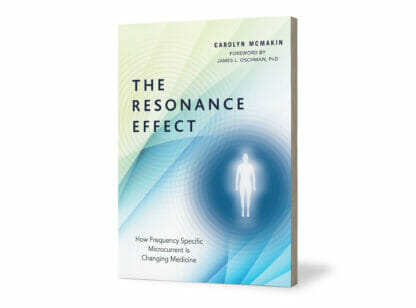The Coachella Valley’s health care community is unique in that it is home to internationally-acclaimed medical establishments and world-renowned holistic and alternative healthcare practitioners.
When conventional western medicine is practiced in conjunction with alternative modalities it is commonly referred to as integrated health care or “integrative medicine.” A 1998 study showed that more than 40% of the US population is now using complementary and alternative therapies on a regular basis1 and that number is most certainly higher today.
Integrative medicine embraces the aspiration of both the public and medical profession for more compassionate, patient-centered medicine. It has been defined as healing-oriented medicine that takes into account the whole person (body, mind, and spirit). It emphasizes the therapeutic relationship and makes use of all appropriate therapies, both conventional and alternative.2
Practiced for generations by the holistic community, the “mind, body, spirit” movement is growing within conventional medicine, and more research is being done to quantify and validate holistic therapies. The Consortium of Academic Health Centers for Integrative Medicine has 42 academic members including the Osher Center at Harvard, the Stanford Center for Integrative Medicine, and similar entities at Columbia, Georgetown and Yale.
The Coachella Valley contributed to bringing integrative medicine for cancer patients to the forefront in the United States. In 1999, Desert Regional Medical Center’s (DRMC) Comprehensive Cancer Center Pharmacy Director, Timothy Tyler, Pharm.D was asked by management to conduct a survey to determine the undisclosed use of alternative treatments by patients in conjunction with their conventional care. 155 patients were studied and when a multivitamin supplement was included, 80% were indeed practicing alternative therapies. When this factor was removed, it was determined that 40% of patients were still using some other form of alternative care in conjunction with their conventional cancer treatment. These therapies included mega doses of A, C, or E vitamins, shark cartilage (popular at the time), coffee enemas, reflexology, acupuncture, spiritual touch or healing and massage therapy.
“This got our medical staff’s attention,” stated Dr. Tyler. “We felt we needed to become knowledgeable in order to best advise our patients based on scientific research and studies.”
Tyler presented his findings at a medical conference in Prague which intrigued the largely European audience, not just for the information being shared, but the fact that Americans were actually studying the role of alternative care. “Many said, ‘this information is folklore here and whether it works or not, we have used it for hundreds of years. You Americans are actually studying the science behind it,’” adds Tyler.
In 2001, Anita Chatigny, Ph.D. launched the Comprehensive Cancer Center program based on Tyler’s study. “We wanted to create something that would garner respect from both the medical community and the people who had come to embrace complementary modalities. It takes a very special alternative specialist to be able to respect traditional medical care and vice versa.”
Today, the program continues to grow offering patients an open forum in which to discuss all types of treatment. Support teams provide patients with resources and research in addition to therapies such as Tai-chi, visualization and meditation, massage therapy, nutrition, and evidence based herbal and natural remedies. Dr. Chatigny adds, “I am proud of our ability to normalize these modalities within the medical profession.”
Eisenhower Medical Center is recognizing the movement as well. Three of their physicians attended this year’s Scripps Center for Integrative Medicine Conference and development of a referral program to qualified local holistic practitioners is underway. The Eisenhower Wellness Institute is slated to open in February.
“The availability of supporting research has grown, but remains the concern,” states DRMC’s Tyler. “Whereas research for synthetic drugs is commonly funded by pharmaceutical companies who stand to gain from product sales, the entities researching natural modalities are limited.” Leading the charge are the Federal Government’s National Center for Complementary and Alternative Medicine (NCCAM) and individual universities.
Many local doctors embrace the movement and continue their education on integrative medicine. Carol Renke, M.D. of Rancho Mirage states, “As you practice, you start to realize that there is more to healing than what you are taught in medical school. When ten patients tell you something helps, you start to listen.”
Dr. Chris Flores, a family practitioner in Palm Desert observes, “The movement is growing because educated consumers are requesting it. They are doing their own research and want their doctors to know or at least be open to information on supplements and alternative therapies that work for them and improve their quality of life.”
Flores and Renke both commonly refer patients to local acupuncturists, massage therapists, nutritionists, chiropractors and naturopaths to name a few.
Dr. Neal Rouzier is a physician at the Preventive Medicine Center in Palm Springs. He practices both conventional and alternative medicine and is an integrative educator internationally. “This is an extremely important movement as alternative medicines often enable patients to heal more quickly with fewer side effects. Alternative modalities provide additional tools and options that we as doctors can use to help individual patients.”
“My passion is teaching,” adds Rouzier, “I was a typical doctor resistant to things I hadn’t learned in medical school. My patients initially opened my eyes to learning and research and continue to do so. Our educational program teaches science-based integrative medicine to a variety of doctors including cardiovascular surgeons, neurosurgeons, family and general practitioners throughout the United States and around the world. It is a slow evolution, but a positive one of which I am proud to be a part.”
Sources: 1) Eisenberg DM, Davis R, Ettner S, et al. Trends in alternative medicine use in the United States, 1990-1997. JAMA 1998; 280:1569-1575. 2) 21Maizes V, Schneider P, Bell I, Weil A. Integrative Medical Education: Development and implementation of a comprehensive curriculum at the University of Arizona. Acad Med 2002: 77:851-860.















































Comments (2)
I am interested in making an appt.
Thank you, Joan. We are actually Desert Health newspaper. Was there a particular practitioner mentioned with whom you wanted to make an appt? If so, I will gladly provide their contact information.
With appreciation ~
Lauren Del Sarto, Publisher
[email protected]